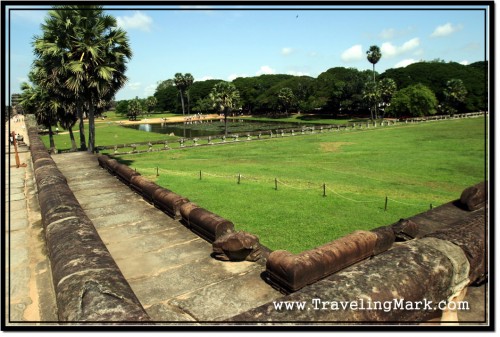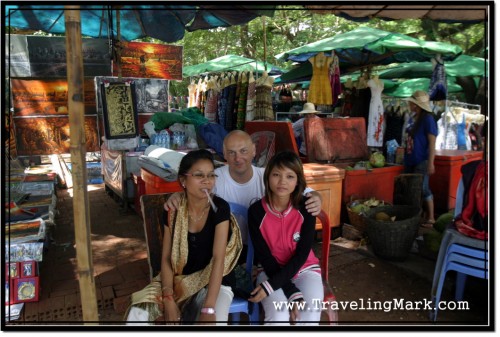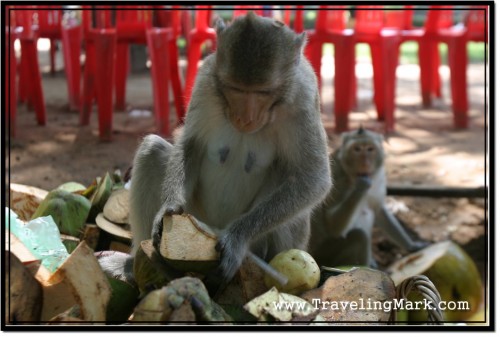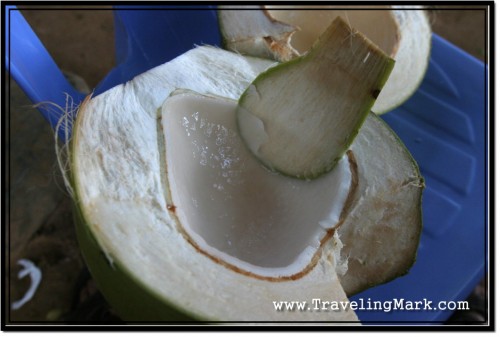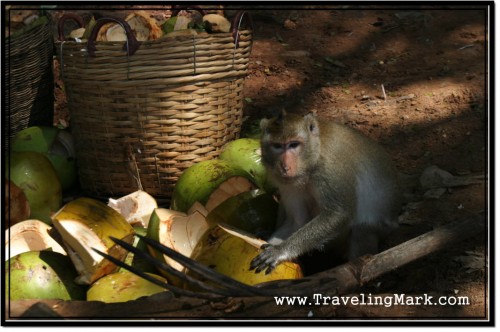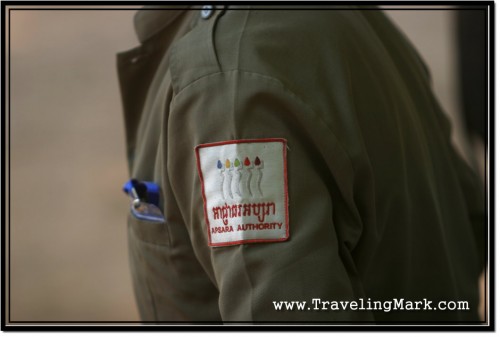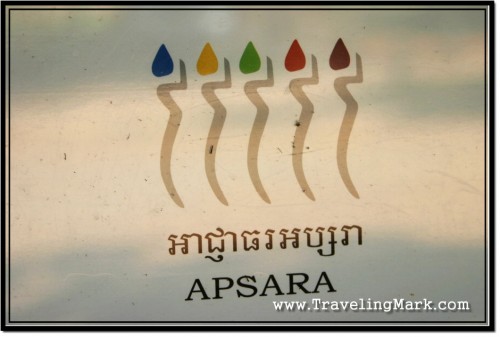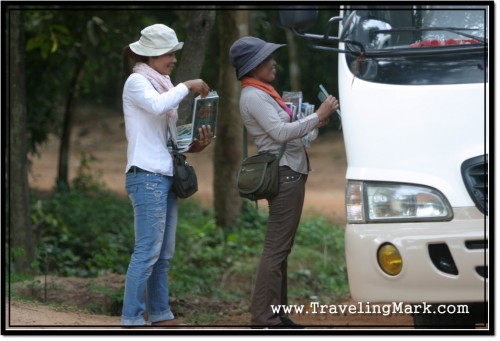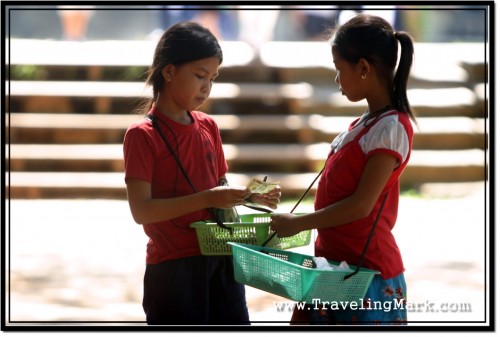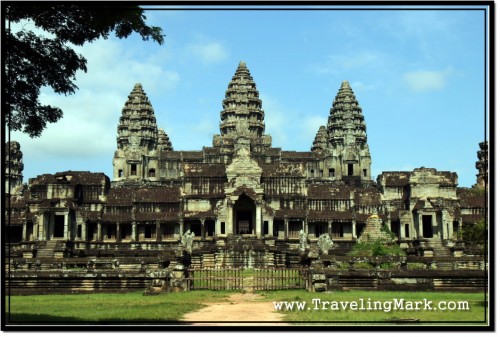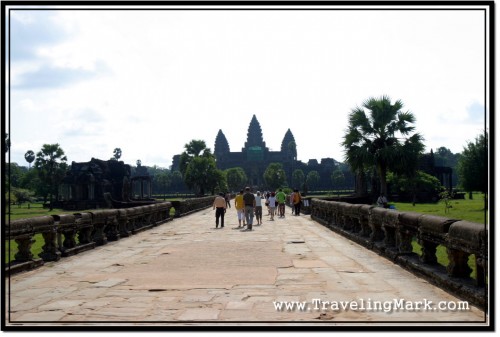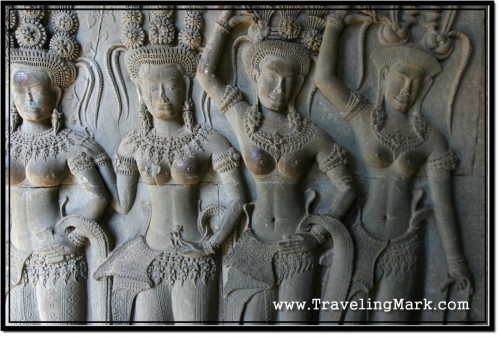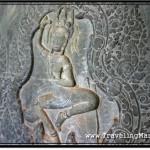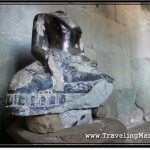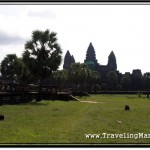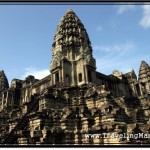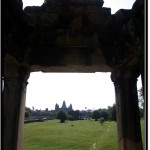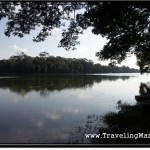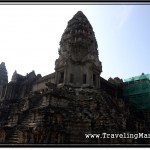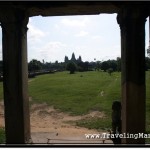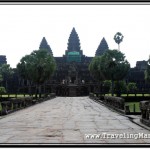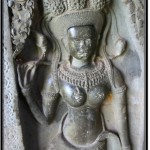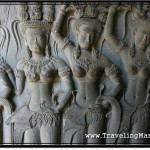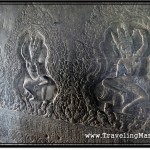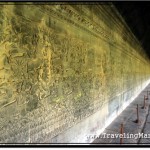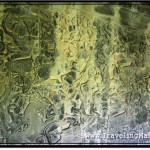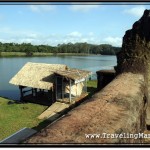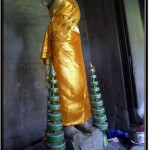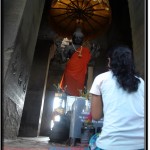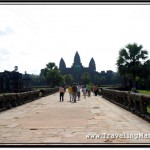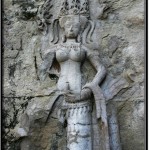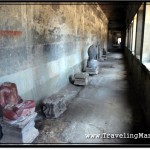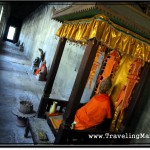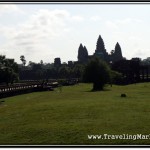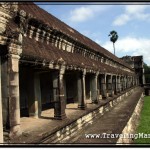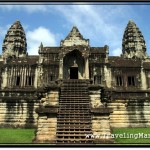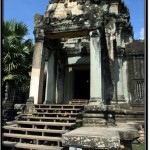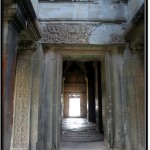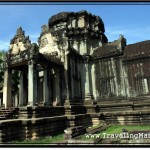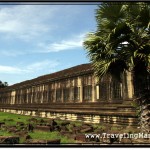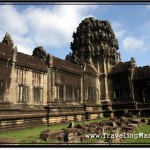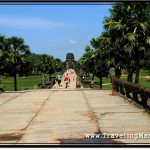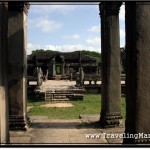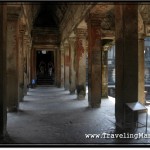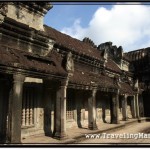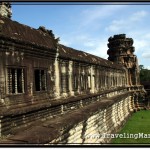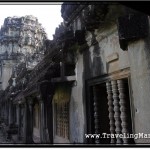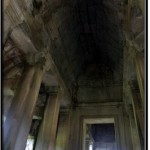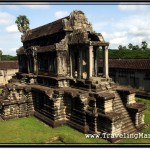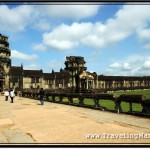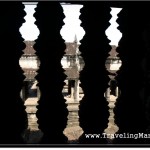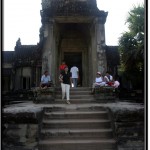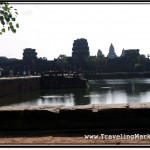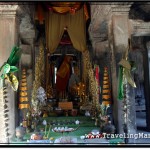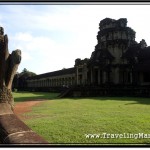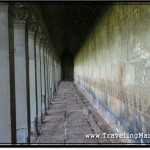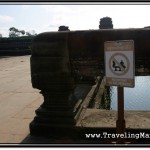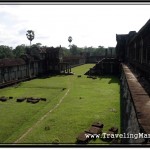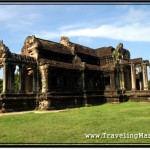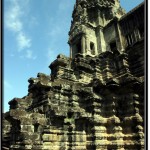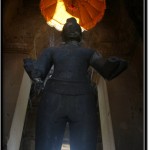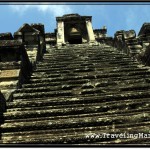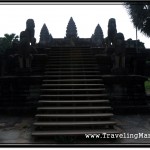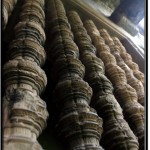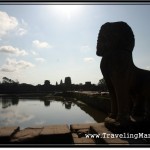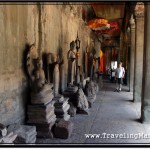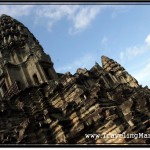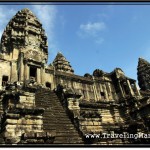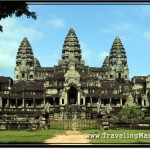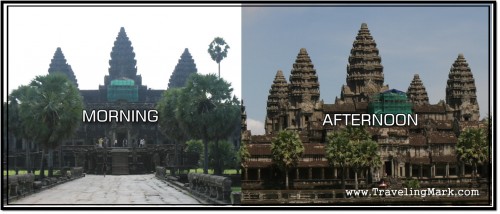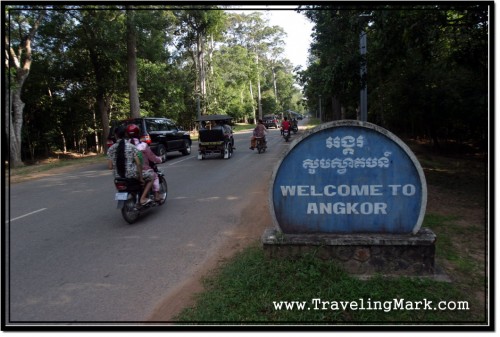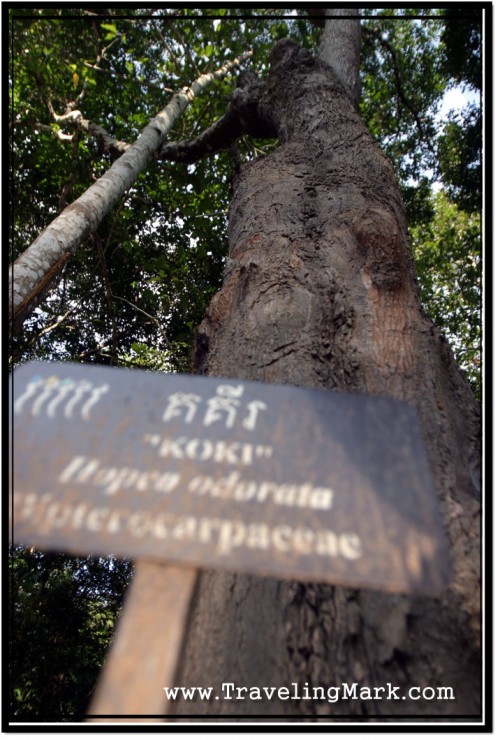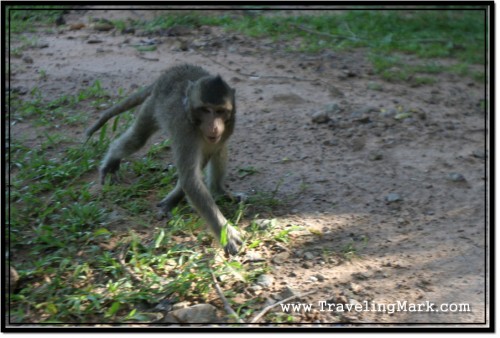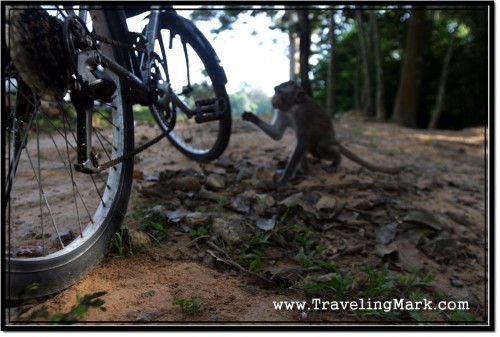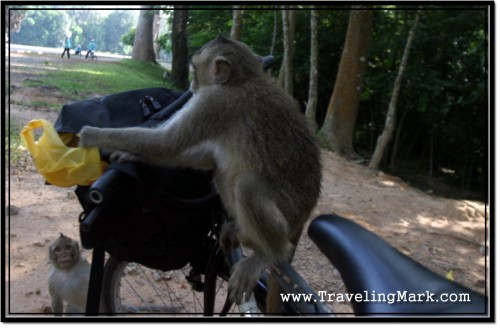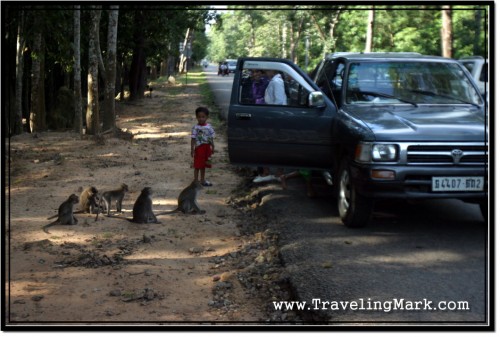My first day at Angkor by bicycle taught me some valuable lessons and showed me what real Angkor is really like. It is not in my nature to sugar coat anything so I’ll say it how it really is. First of all, if you are into ancient architecture and find fascination with ancient Khmer civilization that was on top of the game in its time but then mysteriously vanished, then Angkor will blow your mind. However if you are not, every temple you visit after the first one will look the same.
Angkor Heat
I’m am used to riding long distances every day in all types of weather, facing the harshest of elements, but Cambodian heat is far more intense than heat of any other country I have previously visited. I spent 6 months on various islands of the Caribbean using bicycle as my sole means of transportation yet even though I was in the tropical climates with intense heat, it was nothing compared to Cambodia.
I met a guy from Vancouver, Canada who came to Cambodia from Indonesia and even though Indonesia is directly on the equator while Cambodia is much further north, he said Indonesia was just as hot, but Cambodian sun was way more intense.
An English fellow I met purchased a three day pass to Angkor and rented an air conditioned car to drive him from one temple to another so he got regular breaks from the sun and the heat yet he said he couldn’t do any more of it after one day. The heat was just way too intense to handle after he got out of the air-conned car space.
Angkor Touts
Cambodian sun will suck all energy right out of you within minutes, but there are far bigger dangers in and around Angkor that are far more difficult to deal with. Cambodian touts rely heavily on the sun which as I had mentioned sucks life right out of people leaving them completely burnt out after just a few minutes of exposure to it. The touts know that anyone who’s this exhausted can’t be 100% alert 100% of the time so they keep attacking all tourists with relentless intensity. All tourists are subjected to constant pressure from the locals so it’s only a question of time before one of them succeeds in taking advantage. If you’re lucky, it will only be money you will lose.
Combination of an extremely intense sun with inescapable heat wears everyone down way too much but constant pressure from the touts will force you to waste that little bit of energy you still have left on keeping them away. There is an endless supply of them. Once you shook one of them off, another three dozen will jump down your neck and won’t leave you alone no matter what you do. After they have pushed you to a point at which you believe it couldn’t get any worse, you will get a fresh score of them who will be twice as aggressive as the ones before. There is absolutely no escaping them and to constantly fight them off is extremely exhausting.
Angkor Crime
On top of touts and scam artists whose life purpose is to rip people off, Angkor is also full of extremely dangerous, violent criminals. Thousands of them possess weapons and explosive they’ve owned since the days of Khmer Rouge. The owners are for the most part former Khmer Rouge killing machines recruited as young teenagers to kill people on daily basis. They are used to drawing blood and seeing people die by their hand. They’ve been doing that since they were 14 and always got away with it. Little has changed since Khmer Rouge was suppressed. New, more dangerous form of it rules Cambodia today but for you as a foreigner, the most disconcerting part are the killing recruits who are nowadays in their forties and fifties and are as blood thirsty as they were when they were enlisted to kill.
The dangers of roaming through Angkor don’t end with former Khmer Rouge killing machines. Every Cambodian knows darn well that no crime against foreigners is ever investigated so all it would take it to butcher one with a machete and let them rot in the middle of the jungle where they will never ever be found. After one of those Cambodians got you, that will be the last time anyone has ever heard of you. Stray dogs will appreciate your maggoty flesh as they get treated like shit and are never fed by their masters so a little feast of this sort will surely do them good. BTW, Mahatma Gandhi once said that “you can judge a society by the way it treats its animals”. If that is true, than Cambodians are some of the most horrible people in the world. If you ever come to Cambodia, just take notice of how locals treat their animals and you still can breathe after it, remember the quote and draw your own conclusions.
Angkor Rapes
Despite obvious dangers, most visitors to Angkor will not experience problems as Angkor sees thousands of foreign visitors every day making violent crime in most areas difficult. That being said, wandering off populated areas or exploring temples solo is a very risky business. Yet it gets far worse if you are a girl. Cambodia is a rape capital of the world. Many, many and then some girls were raped in less frequented temples and none of it was investigated. Rape itself is the worst experience a girl could ask for during her travels, but getting raped in Cambodia also comes with additional, complimentary present – HIV!
None of the local girls dare to wander around after dark. They all lock up in their homes and always make sure a male they can trust, such as their brother is nearby because rape hungry Cambodians won’t stop at closed doors. Just about every Cambodian girl you ever get a chance to talk to has either already been raped or came this close to it. Shockingly, true Cambodian won’t shy away from any girl, regardless how young. Sexual abuse of children by Cambodian males is an every day thing and that also involves children who can’t even speak or talk yet.
When you are in Cambodia, it’s not about whether you will be a victim of crime, it’s about when. If you are lucky, you will come and leave before someone pulls it on you. That by no means that you only met nice people. That simply means that you didn’t give them a chance to attack you. If you keep your eyes open, you will see how just about every Cambodian will check you out closely, carefully estimating what the content of your pocket could be and how difficult it would be to gain control of it. They are extremely skilled in thievery and anyone whose observant enough will notice how they always check you thoroughly out for what could be stolen, even if it will not always lead to an attempt to steal. Intentions are undeniable, though.
Angkor Roads
Because Angkor is so overrun with tourists, you will be a difficult target for most fishy Cambodians even though they will relentlessly wait for their moment. This is the reason why most tourists get out of Cambodia unharmed. Many of them lack the ability to read people or are simply too dumbed down to see the obvious but to their credit, they will come back from Cambodia with naught but happy memories. Ignorance truly is a bliss. Perhaps the key to enjoying your stay in otherwise truly dangerous Cambodia is to party it out completely oblivious to dangers as unless you try to be an explorer, the likelihood of something bad happening to you is reasonably low.
However – and that’s a BIG however… even though you may avoid being a victim of violent crime Cambodia is so riddled with, there is one thing you will not avoid not matter what – getting killed in a traffic accident.
Cambodians are the worst drivers in the world with virtually no traffic rules in place (or enforced) whatsoever. Their desire to compensate for their hurting egos takes flight when they sit behind the wheel of a motorcycle or a car. It makes them feel empowered so they honk horns all the time to let everyone know that their macho ego is coming through and force themselves in with no respect for bicyclists or pedestrians. Yes, Cambodia is one of the most dangerous countries in the world, yet despite of all that, their drivers are so awful you are in even greater danger from being killed by a vehicle each time you step outside the room than by a blood thirsty Khmer Rouge killing machine. Just imagine how horrible the road situation must be if it’s more dangerous than their uncontrolled guns and explosives possessed by the killing machines who have been killing since their early teens. This is what real Angkor is really like. Being a photographer and a journalist makes me to walk around with my eyes open. Sometimes I wish I was different so I could live with blissful ignorance, completely oblivious to all the dangers a countries like Cambodia represents. I’d come and leave and would just write about warm locals who were extremely nice to me, because I didn’t see that they were faking it to get money off of me. I’d write about helpful locals who showed me hidden treasures because I didn’t see they were setting me up but their plan was busted last minute by a group of Japanese guided tourists who showed up at what could have been the crime scene had they not been there.
